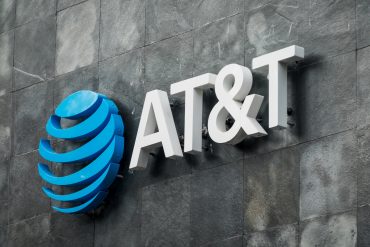

AT&T data breach settlement protects 183 million customers while setting new precedent for corporate cybersecurity accountability
Key Takeaways
- $177 million AT&T settlement approved for data breaches affecting 183 million customers across 2019 and 2024 incidents, with individual payouts ranging from $2,500 to $5,000 for proven damages.
- Norwegian dam hacked with basic password attack demonstrates critical infrastructure vulnerabilities, as hackers opened water valves at full capacity for four hours using weak authentication credentials.
- Cybersecurity costs escalate across sectors as organizations face mounting financial penalties, regulatory scrutiny, and insurance premium increases following high-profile breaches and infrastructure attacks.
Introduction
A US District Judge has granted preliminary approval for AT&T’s $177 million settlement addressing two major data breaches that exposed personal information of 183 million customers. The telecommunications giant’s agreement represents one of the largest cybersecurity-related settlements in recent years, highlighting the mounting financial consequences companies face when data protection failures occur.
The settlement covers incidents from 2019 and 2024 that compromised sensitive customer data including call records, text message logs, and personal account information. SecurityWeek reports that affected customers can receive between $2,500 and $5,000 depending on their ability to demonstrate damages linked to the breaches.
The timing coincides with growing concerns about cybersecurity vulnerabilities in critical infrastructure, exemplified by a recent attack on a Norwegian dam where hackers exploited weak password protections to manipulate water flow systems.
Key Developments
AT&T’s legal troubles stem from two distinct security incidents spanning five years. The 2019 breach exposed data from approximately 7.6 million current customers and 65.4 million former account holders when information appeared on dark web marketplaces.
The more recent April 2024 incident involved unauthorized access to AT&T’s cloud storage provider Snowflake, compromising call and text records for 109 million US customers. According to the Identity Theft Resource Center’s 2024 Annual Data Breach Report, this incident generated 110 million victim notifications.
US District Judge Ada Brown granted preliminary approval on June 20, 2025, with the claims process beginning August 4, 2025. Final court approval is scheduled for December 3, 2025, with payments expected in early 2026. AT&T has confirmed two arrests related to the 2024 breach while maintaining denial of legal wrongdoing despite agreeing to the settlement.
Market Impact
The settlement establishes a significant precedent for cybersecurity-related financial penalties in the telecommunications sector. Companies managing large customer databases now face potential exposure measured in hundreds of millions of dollars when security controls fail.
Telecommunications stocks have experienced increased volatility as investors factor cybersecurity risks into valuation models. The settlement amount represents substantial financial impact even for major carriers, influencing how companies allocate resources toward preventive security measures.
Insurance markets respond by adjusting cybersecurity coverage premiums and requirements. Carriers now demand more rigorous security audits and compliance demonstrations before providing coverage, particularly for companies handling sensitive customer communications data.
Strategic Insights
The AT&T settlement signals a shift toward aggressive financial consequences for data protection failures. Companies across sectors recognize that cybersecurity investments now compete directly with potential litigation costs and regulatory penalties.
Critical infrastructure vulnerabilities extend beyond telecommunications to essential services like water management and power generation. The Norwegian dam incident demonstrates how basic security hygiene failures can expose vital systems to manipulation, creating operational and safety risks.
Organizations prioritize foundational security controls over advanced threat detection systems. The emphasis moves toward multi-factor authentication, network segmentation, and continuous monitoring rather than sophisticated artificial intelligence solutions that address symptoms rather than root causes.
Expert Opinions and Data
Security professionals emphasize that recent incidents reflect systemic problems rather than isolated failures. Grant Geyer, Chief Strategy Officer at Claroty, characterizes the Norwegian dam breach as emblematic of widespread vulnerabilities.
“This wasn’t a super sophisticated cyber attack; it was someone logging into a control system with too little security and opening a dam valve all the way,” Geyer explains. “Just like you wouldn’t leave your front door unlocked, the systems that we rely on for access to water, power, and heat need that same basic protection.”
The Norwegian financial sector has established a dedicated Cyber Threat Support Unit to centralize expertise and coordinate responses across institutions. This collaborative approach represents emerging industry recognition that individual organizations cannot address sophisticated threats in isolation.
Research indicates less than 20% of Norwegian bank executives view quantum computing as an immediate threat, while approximately 40% identify malware and ransomware as primary concerns. This data suggests organizations focus on current vulnerabilities rather than theoretical future risks.
Conclusion
The $177 million AT&T settlement establishes cybersecurity failures as material business risks requiring board-level attention and substantial financial reserves. Companies managing customer data now operate under the assumption that breaches will result in significant legal and financial consequences regardless of intent or negligence claims.
Critical infrastructure attacks demonstrate that cybersecurity extends beyond data protection to operational safety and public welfare. The Norwegian dam incident shows how basic security failures can compromise essential services, creating regulatory and liability exposure across multiple jurisdictions.
Organizations across sectors accelerate investments in foundational security controls while regulatory bodies prepare more stringent compliance requirements and enforcement mechanisms.





